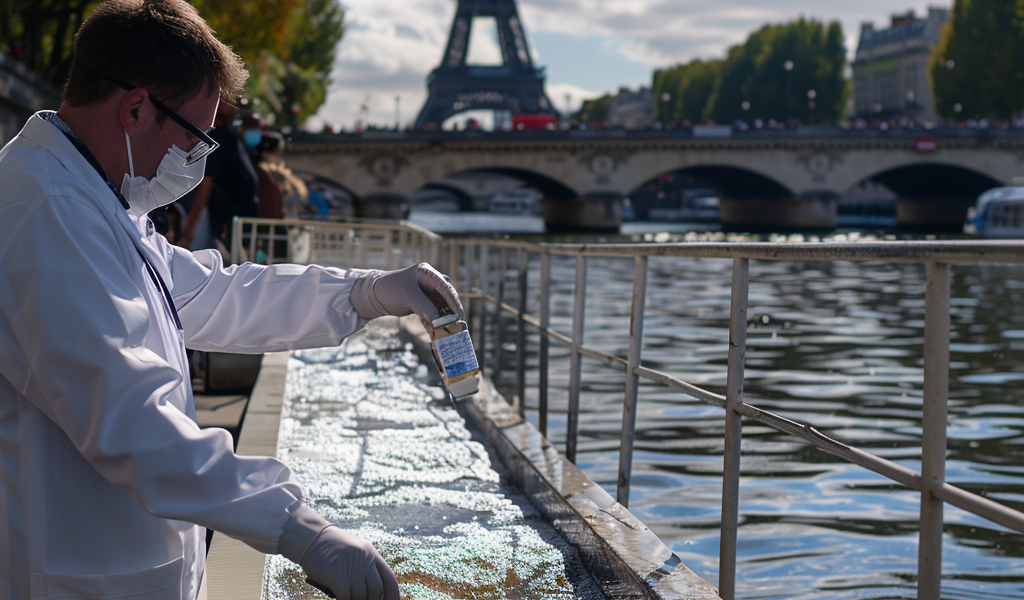Experts from the French national public health agency have recently established a model framework aimed at identifying priority pathogens for wastewater surveillance (WWS) in anticipation of the upcoming summer Olympic and Paralympic Games in Paris. With an expected influx of 16 million visitors from across the globe, ensuring public health safety is paramount.
The research team highlighted that the viruses responsible for polio and influenza topped their list of pathogens to be monitored. Utilizing a combination of peer-reviewed studies and expert opinions, the researchers pinpointed six target pathogens deemed suitable for WWS, particularly in the context of mass gatherings. This approach allows for the monitoring of disease prevalence and assists in making informed public health decisions.
According to the researchers, “Wastewater acts as a ‘mirror’ of population health.” They elaborated that through the examination of sewage samples, wastewater-based epidemiology (WBE) can yield critical insights into substance consumption—including both legal and illegal drugs, tobacco, and alcohol—as well as chemical exposure and the circulation of specific pathogens within a community.
The findings of this extensive research were published in the journal Eurosurveillance, shedding light on the methodologies used to narrow down the list of pathogens for monitoring.
Narrowing the Pathogen List
The identification process for target pathogens was guided by criteria established by the European Centre for Disease Prevention and Control, the Olympic and Paralympic Games, and the World Health Organization. Initially, the researchers examined a total of 60 pathogens. They then correlated these pathogens with those included in a risk map developed by France’s national public health agency, which focused on notifiable diseases, foodborne illnesses, acute respiratory infections, emerging infectious diseases, zoonotic diseases, and an additional six infectious diseases considered for WWS.
For a pathogen to be eligible for monitoring in wastewater, it must be excreted in the urine and/or feces of infected individuals or introduced into sewage through greywater, which is wastewater generated from hygiene activities such as showers. The researchers further refined their list based on several factors, including the analytical feasibility of detecting the pathogens, their relevance to the event, and their characteristics that would aid in guiding public health decisions—such as the allocation of hospital resources and implementing physical distancing measures.
As stated by the researchers, “To be monitored in wastewater, pathogens must be excreted in the urine and/or feces of infected individuals or introduced into sewage via greywater, i.e., from showers and other hygiene activities.” Furthermore, these pathogens need to persist in the environment long enough to be detected using current analytical methods.
Pathogens that did not meet the 70% consensus threshold in assessments completed by 32 experts were subjected to reevaluation by epidemiologists overseeing France’s national wastewater monitoring system. This reevaluation used specific criteria to produce a refined list of 25 pathogens of interest.
Final Selection of Target Pathogens
Ultimately, the research team narrowed their focus to six target pathogens for monitoring during the Olympic and Paralympic Games. These include:
- The virus that causes polio
- Influenza A virus
- Influenza B virus
- Measles virus
- Mpox virus
- COVID-19 virus
This targeted approach to wastewater surveillance represents a proactive strategy to safeguard public health during one of the largest sporting events in the world. By monitoring these pathogens, health authorities aim to detect potential outbreaks early and implement necessary public health interventions effectively.
As the world gears up for the summer Olympic and Paralympic Games in Paris, the focus on wastewater monitoring underscores the importance of innovative public health strategies in managing the health risks associated with large-scale events. The collaboration between researchers and public health officials aims to ensure the safety and well-being of millions of attendees, athletes, and local residents during this significant global event.





